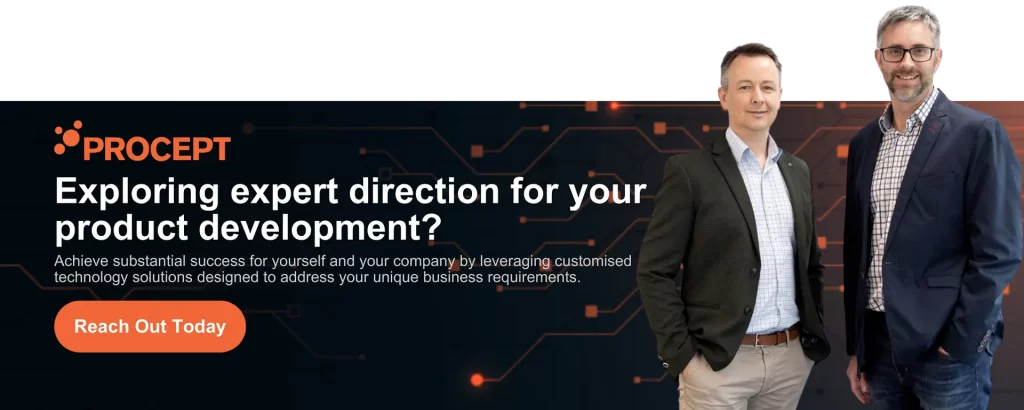
5 ways to fund your Product Development

When it comes to Product Development there are two things that challenge founders more than anything else – time & money. There is an opportunity in the market to race towards, and an amount of funds required to get there. It can be a stressful balancing act.
With a thriving start-up scene in Australia, there are many avenues to raise funds as you set out on your product development journey. Here are the five most common:
1. Grants
Private Grants: Government grants are an obvious source of funding, and we are lucky to have great support for innovation in Australia. People often head straight to these and overlook private grant opportunities that are available. Private grants through industry leaders are a little rarer, however, if they exist in the industry you’re targeting then your story can be compelling in supporting their aims of growing the overall industry. The tip here is to research market leaders and organisational bodies in your sector.
Here are a couple of examples:
Meat and Livestock Australia (MLA): If you are in the AgTech space and are working on a device that will help innovate, cut time and save money for the industry, MLA openly talk about funding opportunities.
Australia’s National Digital Health Initiative (ANDHealth): The ANDHealth Programme is aimed at creating an integrated ecosystem for the development and commercialisation of evidence-based digital health products. Applications for 2018 are now closed but keep an eye out for 2019.
Government Grants: Both Local and Federal Government grants and programmes are available for innovation and product development (PD).
Finally, check out Grant Guru – the sorting hat of grants. As mentioned above, you can search in relation to your sector to see what is available, and find out more details. There are also useful resources on success criteria and assistance with completing grant applications which is an art in itself.
2. Crowd Funding
With so many crowd funding websites now available and the ease/low cost of social media campaign marketing, crowd funding can be a great way to get started.
Fundamental to success is a clear plan of attack to grow an audience that believes in your product and wants it to do well.
Our top tip: utilise social media & PR. Be prepared to pretty much write content for journalists, they need it and they’re short on time. Get visual, share a little more than you’re comfortable with and make sure you give back regularly to the larger audience. Incentive based funding is always great, even if it means an invite to the launch of the product, or sending some branded goodies to even the smallest supporters. This approach allows your audience to feel like they are part of the journey with you. Your goal is to get them excited, share your highs but also share the lows (more importantly what you learnt from them). By doing this you are creating not only a funding avenue, but your very own cheer squad and brand ambassadors! It’s a win-win really.
The one drawback with crowdfunding is the time it takes to execute well on the above. It is a significant investment of time, and it can’t be done by one person. Ideally, get someone in your team who has knowledge of social media and PR planning and execution – they should be able to shortcut the process and save you time.
3. Investors
There are a few different types of investors you can investigate depending on your business; the stage you are at and what you are looking for:
- Angel Investors: This type of investor is typically a one-time investment either by a loan or a stock purchase. Angel investors are usually long-term investors helping a start-up get on their feet during the initial stages of business in the hopes that in future the business will scale up and/or be purchased by a larger corporation.
- Venture Capitalists: This is an investor who provides capital, they tend to be a business or company rather than an individual as the amounts of investment they put in are larger than angel investors, usually upward of $1M.
- Personal Investors: This is investment by family and friends. Although they say, don’t mix business with family/friends, there are many cases of companies being built and succeeding via personal investment.
The important thing is to know what you want to get out of an investor, don’t go in blindly because you are desperate for funding. Ensure your short-term need for cash does not derail your strategy – investment should support your plans, and even enhance it with the addition of money from people with experience in your field, or expertise in your industry.
Key things to consider:
- Are you looking for mentorship?
- What % of your business are you willing to give up?
- Do you really need an investor? Can you figure out an alternative?
- Does your investor believe in what you are building? Or are they looking to change your vision – is their change a good idea
4. Accelerator Programmes
Although Australia is a little behind with accelerator programmes when compared to the U.S, the sector is growing and more and more accelerator programmes are popping up throughout Australia. These are great as they not only provide access to funding but mentorship and business connections that can help your start-up thrive and scale.
Some examples include:
- Melbourne Accelerator Programme (MAP): MAP currently takes a group of 10 start-ups per year and works with them to grow their business. The programme includes $20,000 funding (no equity taken), office space, mentoring and access to global networks of advisers, partners and investors.
- The Actuator: The Actuator Programme is Australia’s largest MedTech accelerator Programme, with three avenues of funding within the Actuator depending on the stage of your business.
- Slingshot: This would have to be Australia’s largest accelerator connectors. They connect corporate’s with start-ups who are building innovative businesses. They have an array of Accelerator programmes available and some great connections to mentors, key networks and funding sources.
5. Bootstrapping
Finally, if all else fails you can always bootstrap. This is the process of starting your business without external help or capital. This means starting small and working full-time to grow it gradually. It takes a lot of work but some of the biggest companies started this way including GoPro, CraigsList and Australia’s Expert 360.
We hope the above has been useful, good luck on your fundraising journey!

Hi, we’re the award-winning engineering team at Procept.
We live and breath product development. Since 2006, our vision has been to make a positive difference through the application of the latest technologies to solve real-world problems and improve people’s lives.
Learn more about our product development services, engineering services, or joining our engineering team. To work with us on your next product development project, contact our team.
Let’s innovate!










